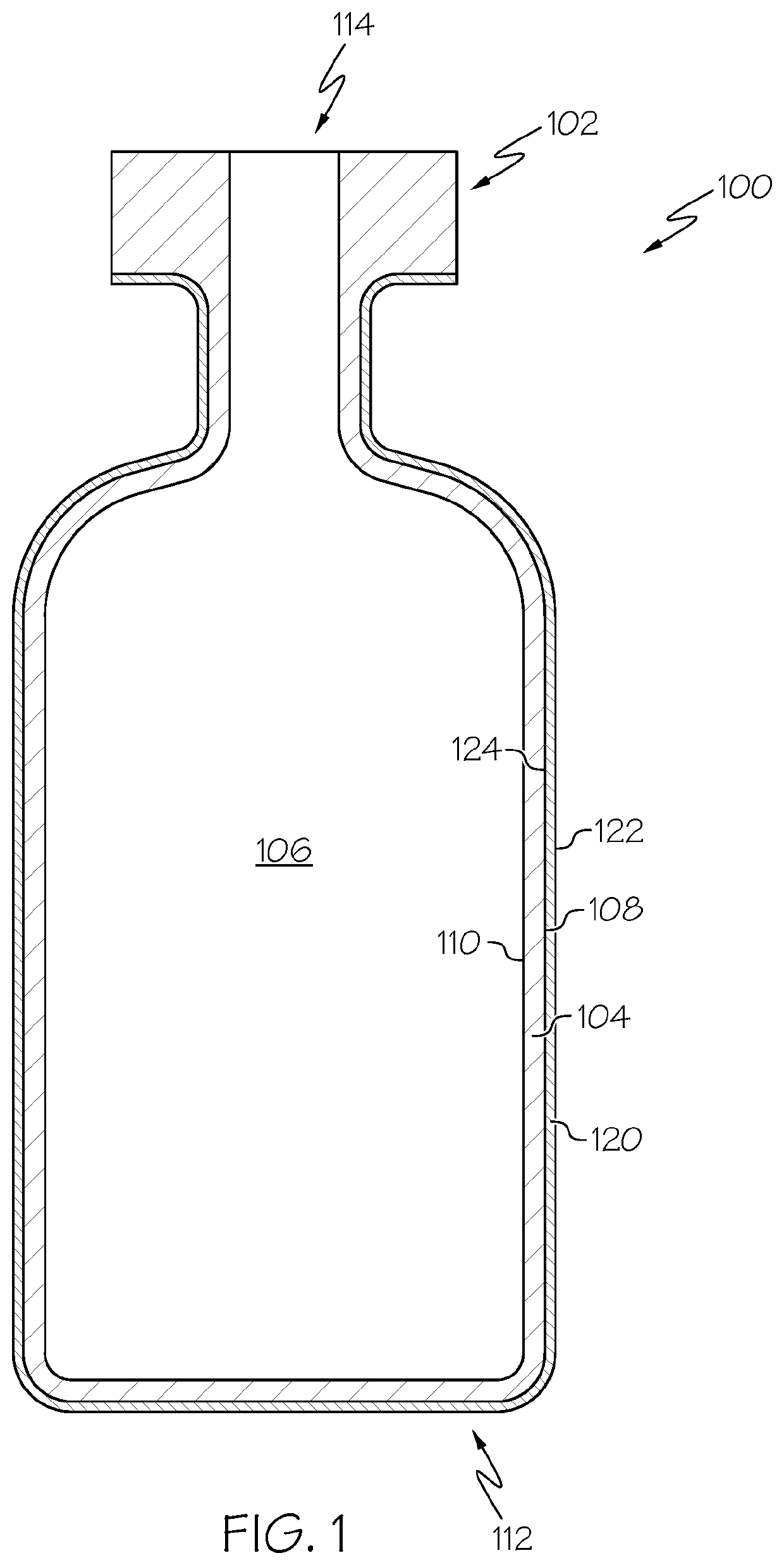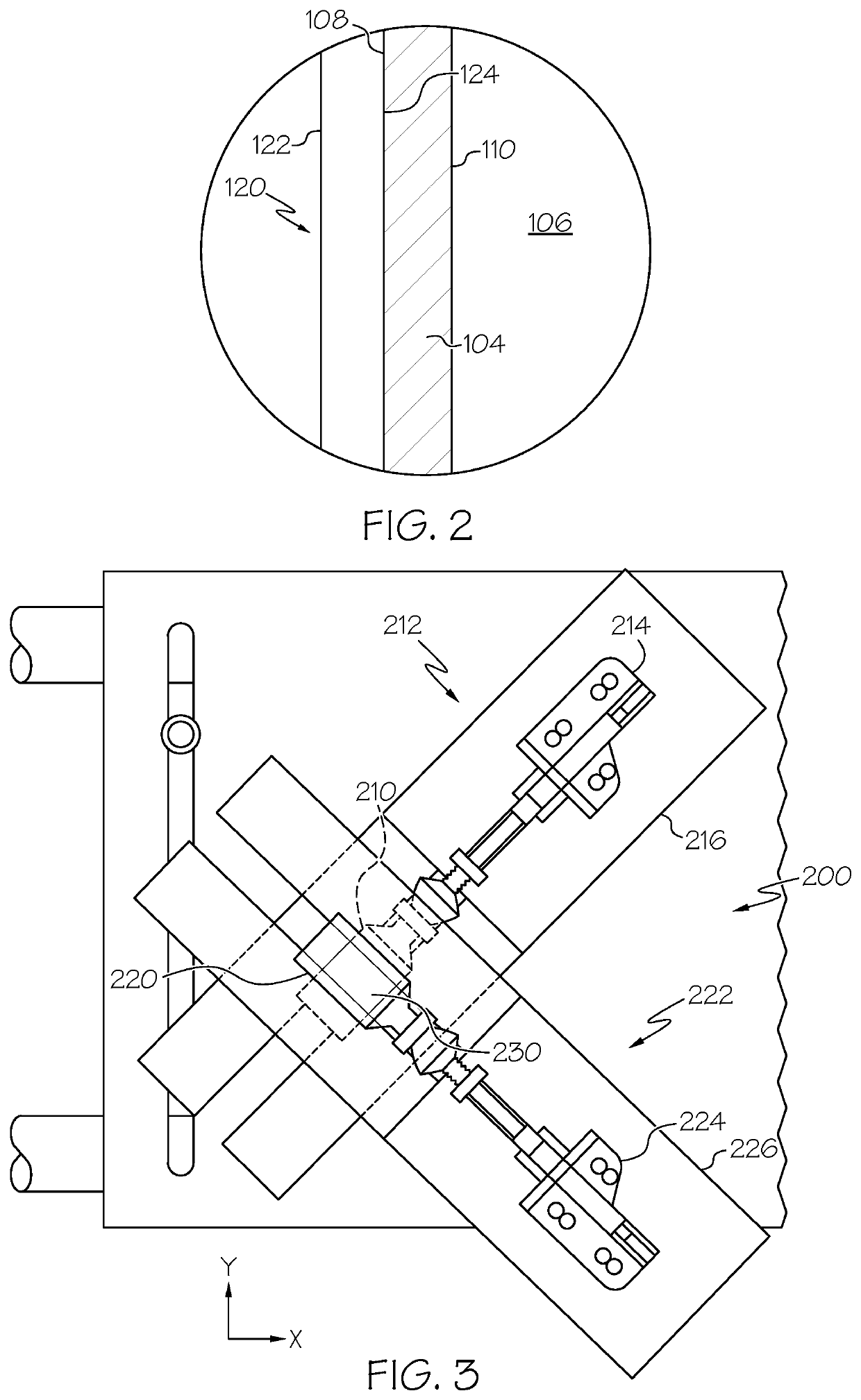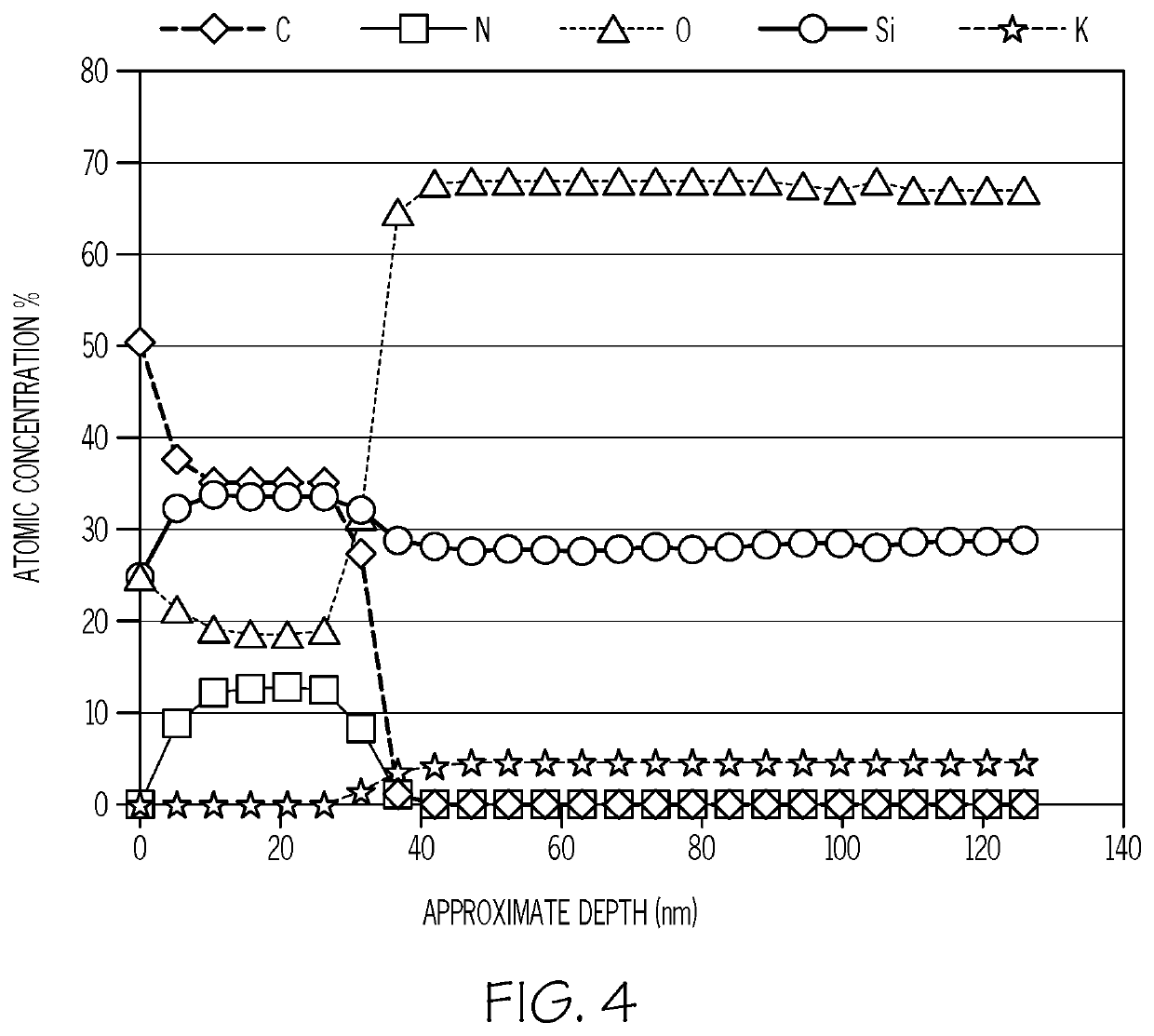Pharmaceutical packages with coatings comprising polysilazane
a technology of polysilazane and pharmaceutical packaging, applied in the field of glass articles, can solve the problems of limited use of glass for such applications, cost-effective loss of drugs or even potential recalls, and contents that lose their sterility
- Summary
- Abstract
- Description
- Claims
- Application Information
AI Technical Summary
Benefits of technology
Problems solved by technology
Method used
Image
Examples
example 1
[0085]Glass vials (ion-exchanged alkali-aluminosilicate in composition) were coated with mixed polysilazane coatings that included silazanes, siloxanes, and silanes. Specifically, vials were coated and tested utilizing three commercially available polysilazane solutions: HS-900, HS-907, and HS-908 (each available from Huntington Specialty Materials). To coat the vials, uncoated vials were heated at 320° C. for 20 minutes and then returned to room temperature. The HS-900, HS-907, and HS-908 solutions may be used as commercially provided without the addition of additional solvent. The coatings were applied to the exterior of the vials by dip coating, where the dip speed was 10 mm / s, the hold time was 5 s, and the return speed was 2 mm / s. Following dipping, the vials were held at room temperature for one hour and then cured in an oven (without added humidity) at 250° C. for 30 minutes.
[0086]It should be noted that many conventional polysilazane curing processes utilize steam curing, bu...
PUM
| Property | Measurement | Unit |
|---|---|---|
| Temperature | aaaaa | aaaaa |
| Fraction | aaaaa | aaaaa |
| Thickness | aaaaa | aaaaa |
Abstract
Description
Claims
Application Information
 Login to View More
Login to View More - R&D
- Intellectual Property
- Life Sciences
- Materials
- Tech Scout
- Unparalleled Data Quality
- Higher Quality Content
- 60% Fewer Hallucinations
Browse by: Latest US Patents, China's latest patents, Technical Efficacy Thesaurus, Application Domain, Technology Topic, Popular Technical Reports.
© 2025 PatSnap. All rights reserved.Legal|Privacy policy|Modern Slavery Act Transparency Statement|Sitemap|About US| Contact US: help@patsnap.com



